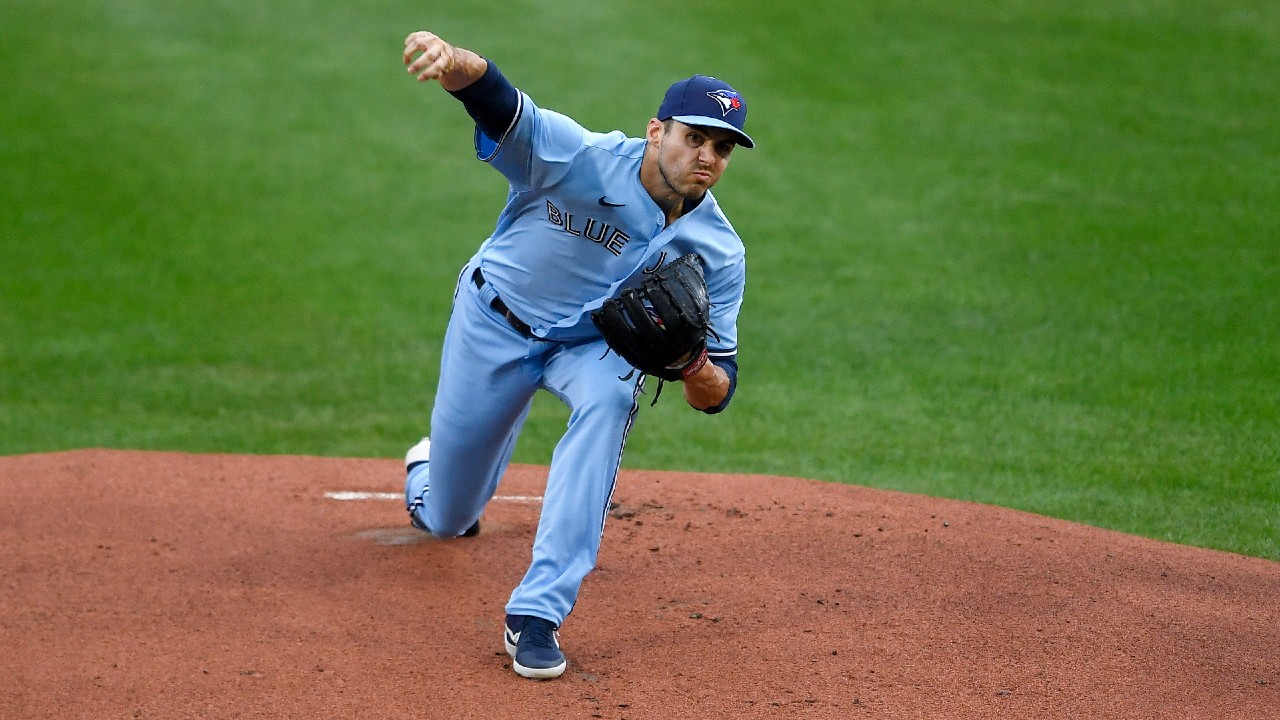When Julian Merryweather reached the majors with the Toronto Blue Jays, there was one thing everybody knew the right-hander had going for him — elite velocity.
Although the 28-year-old rookie spent most of his time since being traded for Josh Donaldson in injury limbo, reports from the Arizona Fall League and spring training trickled in about his ability to throw in the high 90’s.
In his first few outings Merryweather hasn’t disappointed on that count. His fastball is averaging 96.9 m.p.h., which is the best number on the Blue Jays. Largely on the strength of that pitch, Merryweather has racked up 14 strikeouts in his first 10 innings and consistently blown away hitters at the top of the zone or above.
Even some of the best hitters in the game are helpless when Merryweather dials his heater all the way up, and puts it where he wants it — like Brandon Lowe was in the righty’s second MLB outing.
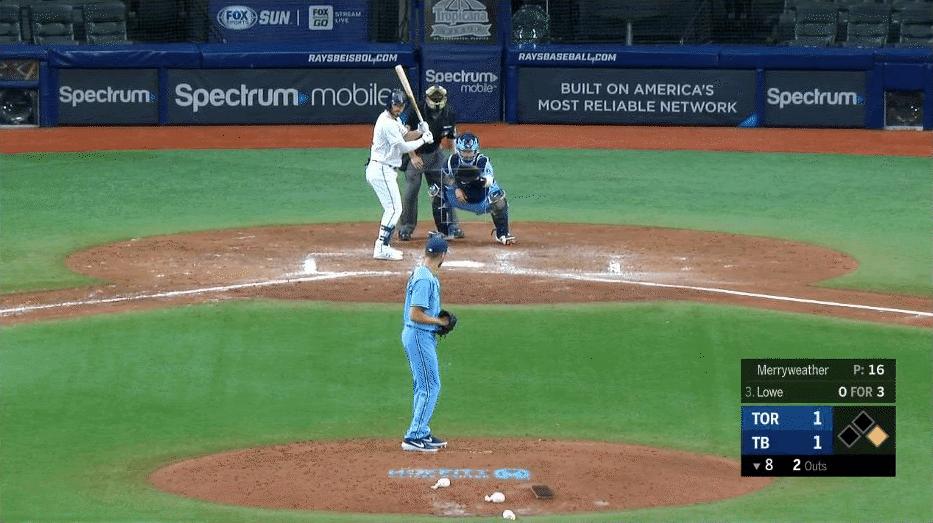
There are plenty of superlatives you could throw around describing Merryweather’s fastball, and there’s no doubt it’s his most impressive pitch. That said, he does have another offering that’s more unique.
In fact, it’s fair to say we’ve never seen a pitch quite like the rookie’s changeup — or at least, there’s no record of one. Since FanGraphs started tracking pitch velocity in 2002, there have been 301 pitchers who’ve averaged at least 95 m.p.h. on their fastball. Not one of them has thrown a changeup as slow as Merryweather’s 80.7 m.p.h. offspeed pitch.
The 16.2 m.p.h. gap between Merryweather’s fastball and his changeup is virtually unheard of. He has the 28th-hardest fastball in the game and the 346th-fastest changeup. The only pitcher with a bigger gap this season is Anibal Sanchez, but his changeup is a 68.7 m.p.h. stunt pitch that he uses six per cent of the time. Merryweather’s changeup is the secondary offering he goes to most frequently (16.2 per cent of the time).
[snippet id=4931337]
We’re in such uncharted waters with this pitch — with a lack of both precedent and sample size — that it’s tough to make any confident predictions about its effectiveness. It’s possible that a velocity gap this large is going to be enough that hitters won’t confuse it for the fastball enough for it to shine. It’s equally possible that it will be absolutely devastating.
For what it’s worth, it’s passing the eye test so far. One of the signs of a strong changeup is its ability to create swings and misses in the zone. That indicates that it’s a deceptive offering, as an 80 m.p.h. pitch in the strike zone is extremely crushable if a hitter is on it.
Merryweather demonstrated that deception against the Boston Red Sox in his third outing, getting the club’s two most dangerous hitters — Mitch Moreland and Xander Bogaerts — to swing through changeups in hittable spots.
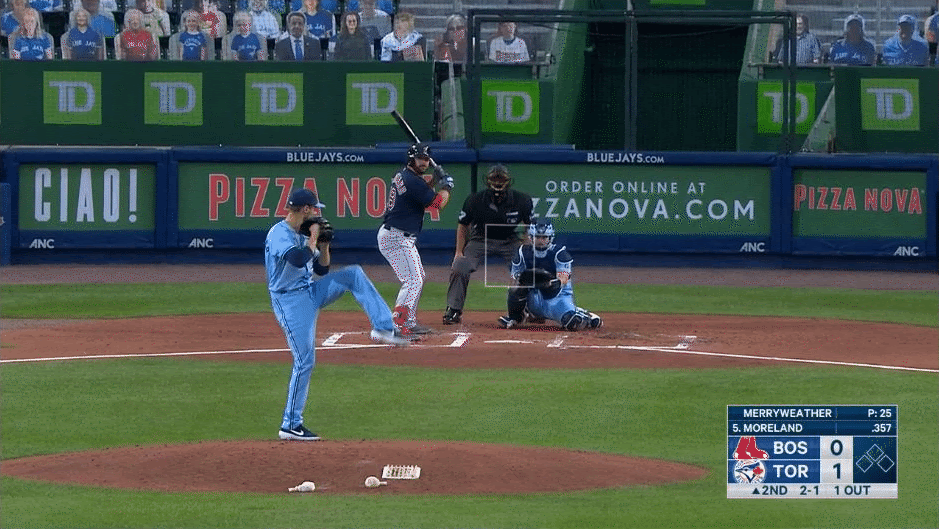
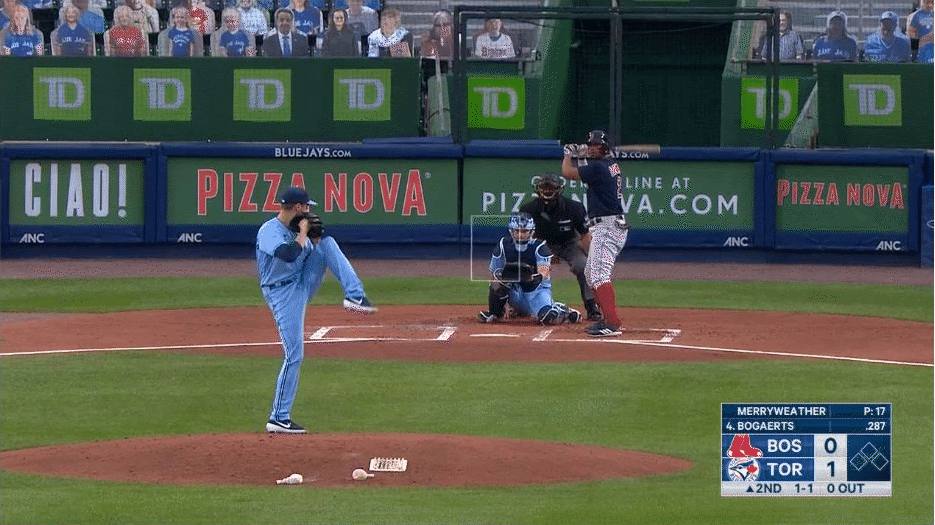
Another indicator that a changeup is effective is that it induces pulled foul balls. If a hitter is yanking the ball foul, it means he’s in front of the pitch. If a changeup is creating that effect, it’s a good sign that hitters are thinking it’s a fastball and ending up fooled.
The perfect example of Merryweather managing that came from his MLB debut, when Rhys Hoskins unloaded on a line drive that wasn’t even close to fair.
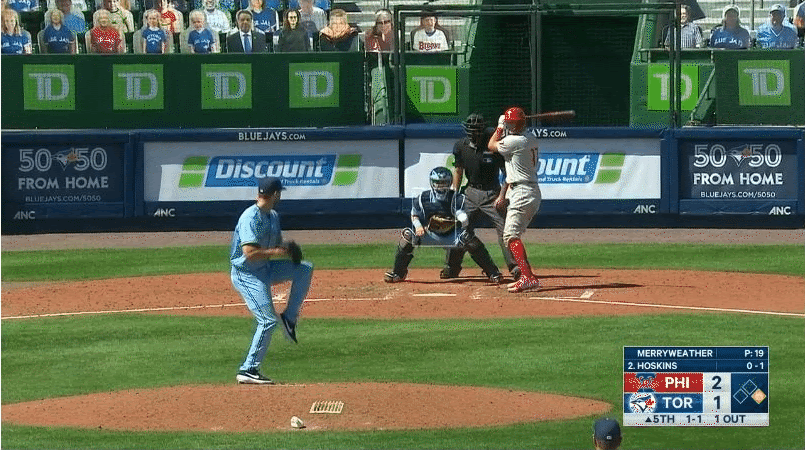
There are also more subtle examples, like Lewin Diaz going all the way around early and chopping the ball foul down the first-base line.

Merryweather’s changeup has only been put in play three times, which have resulted in a chopper to the mound, a ground out to second base and a flyball to left field. Even the flyball was an 82.0 m.p.h. no-hoper with an Expected Batting Average of .040. J.D. Martinez was clearly out in front of the pitch, making it impossible for him to get any power behind his swing, despite the fact it was right down the pipe.
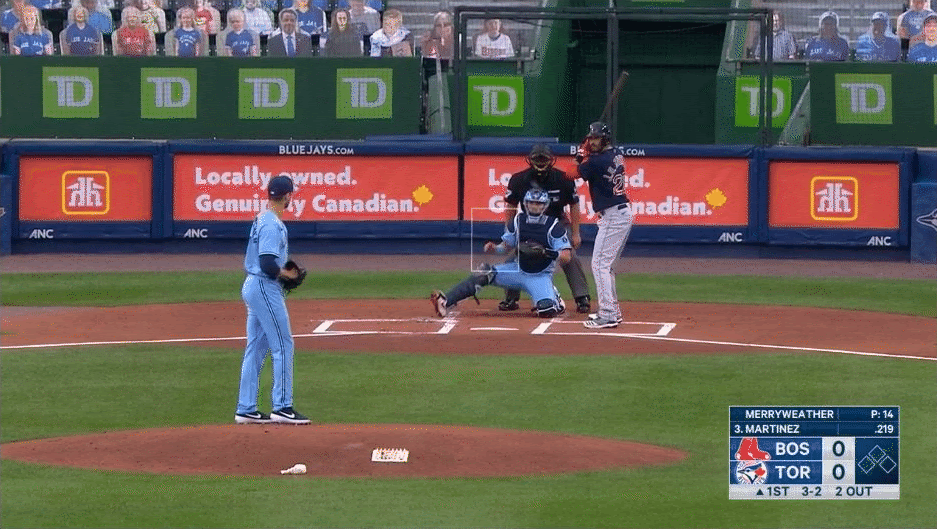
To be clear, we are talking about a pitch that has been thrown 29 times in the majors. We still don’t know how effective it can be. What we do know is this pitch is a true oddity — what remains to be seen if that’ll work for or against it.
Merryweather’s fastball-changeup velocity variance could make his changeup virtually unhittable, especially if he continues to use a fastball-heavy approach, which is usually a good idea when you’re in the upper 90’s. So far, hitters haven’t done anything with it, and produced a 40 whiff rate in the tiny sample we’ve seen.
Alternatively, it’s possible this velocity gap proves too much as hitters get to know Merryweather better. The movement on the pitch is below-average vertically (-2 per cent) and horizontally (-18 per cent) so it will have to remain deceptive to thrive.
For now, all we can say with certainty is that Merryweather wields a truly rare and compelling pitch — and because he already has the 96.9 m.p.h. fastball, it probably won’t determine whether he sinks or swims at this level.
But it might just determine just how high his ceiling is.
[relatedlinks]

